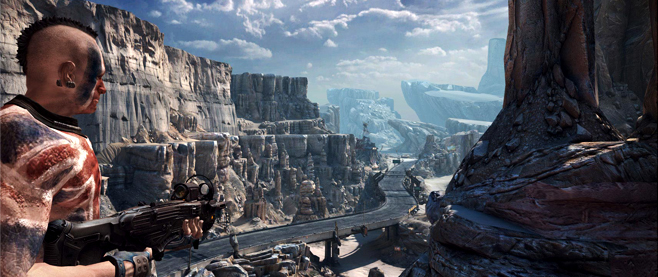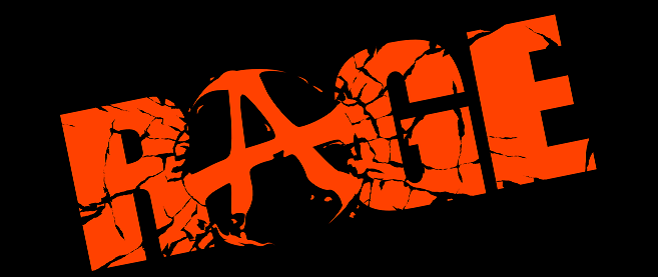
A Rage like No Other
In addition to running Unwinnable, I am also the managing editor over at Digital Innovation Gazette, a trade website sponsored by Intel and concerned with the more technical aspects of videogames and their development. During the course of my duties there, I have the opportunity to do the occasional interview and, since DIG has graciously allowed me to syndicate that content, I can now share them with you here in their entirety. Enjoy!
———-
[wpcol_1half id=”” class=”” style=””]
DIG recently had the pleasure of sitting down with legendary developer John Carmack to discuss his recent work on id Software’s forthcoming first-person shooter, Rage, lauded by many as the best-looking shooter ever made. Carmack, who has a seemingly endless number of influential games on his resume, including Wolfenstein and Doom, proved to be a wellspring of effortless development wisdom.
DIG: So how is Rage coming along?
John Carmack: We are essentially done, content complete, but we still have several more weeks of polishing and tuning to go. But the game is there and we got what we set out to do on it.
Rage is arguably the best-looking thing out there, but my personal point of pride is that it runs at twice the frame rate of almost all our competitors’. It is a 60-frame-per-second (FPS) game that looks like nothing anyone has seen before.
I had the opportunity with this generation to push the graphics in artistic directions that could have been somewhat more exotic than what we chose here, but it would have been at the expense of being a 30 FPS game. I made the early decision that, if we pick this technical direction, we could have this environment that looks incredibly awesome, but can be done at 60 frames per second.
DIG: Has it been hard to stick to that decision?
J.C.: It has been a huge challenge. Rage wound up being twice as aggressive as I originally thought. When I laid the stuff down the first level that we built, I thought we could build it like this and it will be fine. But the later levels turned out to be twice as complex, twice as resource-intensive and it led to us sweating a lot over the last several months as we were packing it all into the final console builds. It’s been a stretch, but those stretches always wind up giving you the best results in the end.
DIG: How are you addressing scaling for multiple platforms on Rage?
J.C.: We had to make the game dominated by the console hardware trade offs. And the PlayStation 3 is, in some ways, the long pole there. They are close, the PS3 and the Xbox 360. You don’t have to do radically different things, but the memory is a little tighter on the PS3 because it is segmented and Sony takes a little bit more off the top for their guide overhead than Microsoft does.
[/wpcol_1half] [wpcol_1half_end id=”” class=”” style=””]
There is no doubt that decisions had to be based around what would work well on the consoles. Unfortunately, the PC suffers so much from API overhead. We have some systems with 10 times the raw horsepower of the consoles, and they are still struggling to maintain the 60 FPS rate. Now, PCs can render 10 times as many fragments, they can be running in 4xAA 1080p, but if I want to do all these things in 15 milliseconds, the PC is at a bit of a handicap – and it has to make up for it with raw brute force.
DIG: Where do you see innovation in game development going in the future?
J.C.: I am historically known as a graphics guy. I’ve enjoyed all the different aspects of the development, but I’m mostly tied up with building the 3D worlds and advancing the technology. Rage gets all its hype about mega-texture, but as a graphics guy I think we are past the curve of where the benefit really is. That’s why, on Rage, I was happy to do the 60 FPS. Every game is better going 60 FPS.
As I look forward to the work for our next technical generations, I think we are going to make more of a difference by changing our development process. PCs have an order of magnitude far greater than consoles. We’ve got 64 bit address spaces, you can put 64 gigs of RAM in these systems and terabyte solid-state drive arrays and 24 threaded processors. We have so much more power there, the marching orders going forward are: Leverage all these incredible super-computer resources in the PC space to allow us to create game more rapidly.
I would be happy if we made another game that looked just as good as Rage but was done in half the time or at twice the iteration.
DIG: Why has speed in development become your focus?
J.C.: I’m always thrilled at the end. I have a vision in my head of how things are going to work when I make a technology, but in recent generations the artists and designers have always surpassed what I think. That’s the difference between the artists and programmers – they have a higher-fidelity imagination.
I have this fuzzy view of what a mega-textured world will look like. You won’t see any repeated textures anywhere and all that, but I can’t imagine the things that the artists build when they spend a year working on something.
I’m very much looking forward to that happening in the future. When I can double the rate at which they innovate these things, how much more is that going to let the great artists and designers contribute to the game?
———
[/wpcol_1half_end]





